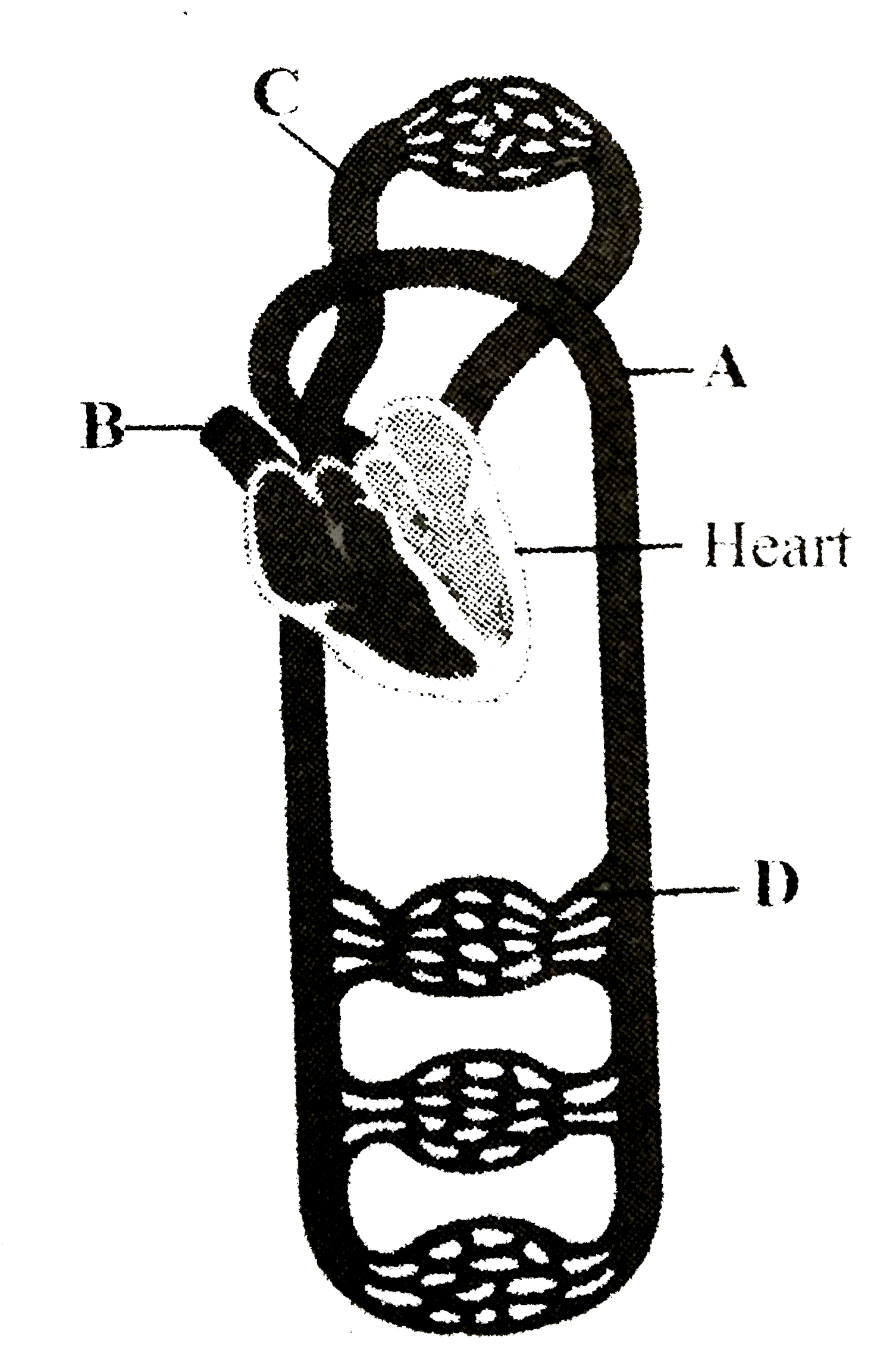What is systemic circulation?
Step-by-Step Solution:
1. Definition of Systemic Circulation: Systemic circulation refers to the part of the circulatory system that carries oxygenated blood away from the heart to the body and returns deoxygenated blood back to the heart.
2. Understanding Double Circulation: In humans and many other animals, the circulatory system is known as double circulation. This means there are two separate circuits: systemic circulation and pulmonary circulation.
3. Flow of Blood in Systemic Circulation: In systemic circulation, the process begins when oxygenated blood is pumped from the left ventricle of the heart into the aorta, which then distributes it throughout the body.
4. Oxygen Delivery and Waste Removal: As the blood travels through the body, it delivers oxygen and nutrients to the tissues and organs. At the same time, it collects carbon dioxide and other metabolic wastes from the tissues.
5. Return of Deoxygenated Blood: After the exchange of gases and nutrients, the deoxygenated blood returns to the heart through the veins. It enters the right atrium of the heart, completing the systemic circulation loop.
6. Summary of Systemic Circulation: In summary, systemic circulation is responsible for transporting oxygenated blood from the heart to the body and returning deoxygenated blood back to the heart.
---
Topper's Solved these Questions
- BODY FLUIDS AND CIRCULATIONBOOK - ICSECHAPTER - BODY FLUIDS AND CIRCULATIONEXERCISE - TEST YOUR PROGRESS (OBJECTIVE TYPE QUESTIONS)
76 Videos
- BODY FLUIDS AND CIRCULATIONBOOK - ICSECHAPTER - BODY FLUIDS AND CIRCULATIONEXERCISE - TEST YOUR PROGRESS (FILL IN THE BLANKS WITH APPROPRIATE WARDS)
16 Videos
- BODY FLUIDS AND CIRCULATIONBOOK - ICSECHAPTER - BODY FLUIDS AND CIRCULATIONEXERCISE - REVIEW QUESTIONS( VIII. SHORT ANSWER TYPE QUESTIONS )
6 Videos
- BIOMOLECULESBOOK - ICSECHAPTER - BIOMOLECULESEXERCISE - REVIEW QUESTIONS (LONG ANSWER TYPE QUESTIONS)
9 Videos
- BREATHING AND EXCHANGE OF GASESBOOK - ICSECHAPTER - BREATHING AND EXCHANGE OF GASESEXERCISE - REVIEW QUESTIONS (LONG ANSWER TYPE QUESTIONS)
8 Videos
Similar Questions
Knowledge Check
Which of the following sequences is truly a systemic circulation pathway ?
ARight ventricle → Pulmonary aorta → Tissues → Pulmonary veins → Left auricleBRight auricle → Left ventricle → Aorta → Tissues → Veins → Right auricleCLeft auricle → Left ventricle → Pulmonary aorta → Tissues → Right auricleDLeft auricle → Left ventricle → Aorta → Areries → Tissues → Veins → Right atriumThe given figure is of circulatory system. Identify the labelled parts (A-D) from the list (i-vii).
(i) Pulmonary circulation
(ii) Systemic circulation
(iii) Superior vena cava
(iv) Inferior vena cava
(v) Aorta
(vi) Veins and venules
(vii) Arterioles and capillaries
 AA B C D(v) (iii) (i) (vii)BA B C D(vii) (iv) (i) (vi)CA B C D(v) (iii) (ii) (vii)DA B C D(vii) (v) (i) (vi)
AA B C D(v) (iii) (i) (vii)BA B C D(vii) (iv) (i) (vi)CA B C D(v) (iii) (ii) (vii)DA B C D(vii) (v) (i) (vi)
Which of the following represents systemic circulation ?
View SolutionA : Left ventricle pumps blood at a much higher pressure to all body parts involved in systemic circulation.
R : The muscular wall of the left ventricle is two to four times as thick as the wall of right ventricle.
View SolutionAssertion : Portal system consists of veins which start from capillaries and end into capillaries.
Reason : The hepatic portal vein carries blood from intestine to liver before it is delivered to the systemic circulation.
View SolutionA correct systemic circulation pathway is
View SolutionWhich of the following options represents correct systemic circulation in human being ?
View SolutionDefine the following :
(i) Species
(ii) Endarch condition
(iii) Systemic circulation of blood
View Solution
